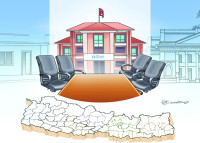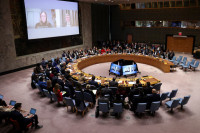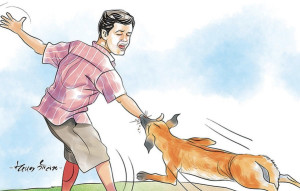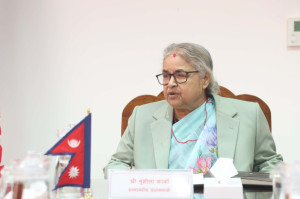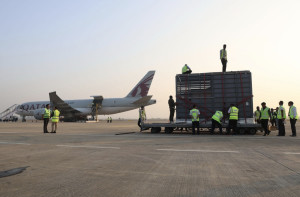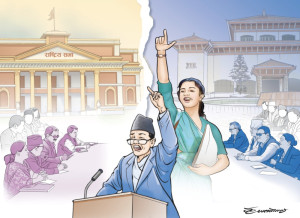Columns
Time to return to the drawing board
We must rethink our development approach by prioritising smaller and decentralised infrastructure.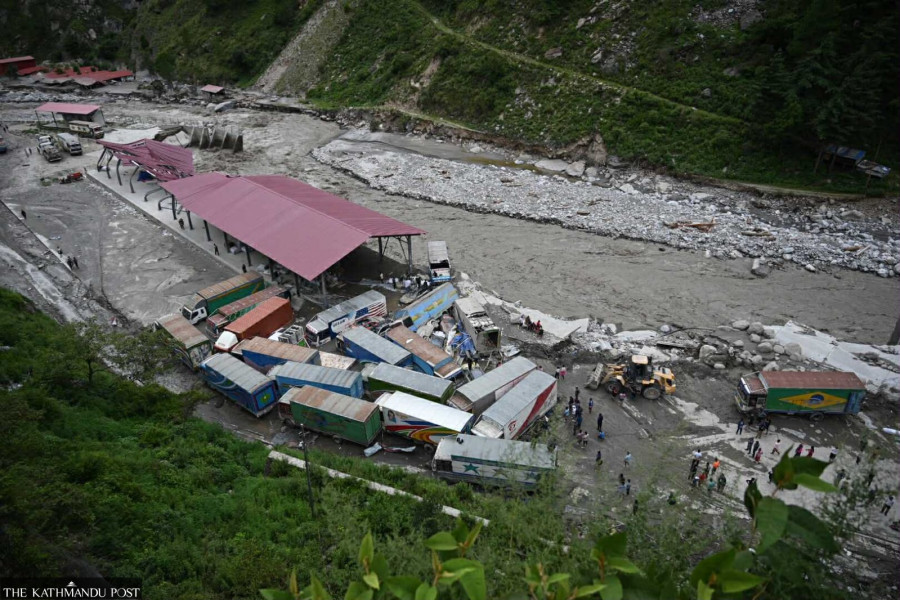
Madhukar Upadhya
Nepal’s Himalayas are getting hotter, drier and wetter simultaneously, as depicted by recent events. Supraglacial lake bursts and possible glacier collapse in Humla, Mustang and Rasuwa suggest rising temperatures in the high mountains, while Madhesh, the country’s breadbasket, is officially drought-stricken due to an acute lack of rain even in the midst of monsoon. Concurrently, Dhangadi, in the far west, faced severe flooding with 213 mm of rain measured in 24 hours. The unfolding events have profound and, worryingly, long-term implications for the stability of our economy and livelihoods.
The colossal damage caused by the startling July 8 Rasuwa floods claimed 9 lives, with 19 still missing, and wrecked 24 container trucks carrying merchandise, six freight trucks and 70 electric vehicles. It damaged four hydropower projects, halting at least 168 MW of power production, and swept away the Nepal-China Friendship Bridge and a significant stretch of road to the border with alarming ease, severely disrupting trade for the coming weeks, if not months. Earlier, in mid-May, floods and landslides displaced 18 families in Humla. Farmers in the drought-stricken Madhesh region have planted only 34 percent of the paddy crop due to insufficient rain, diminishing the prospect of a good harvest.
These episodes, requiring varied yet specific strategic responses, not only stretch the institutional capacity of relevant agencies to reach victims on time but have also left experts scrambling to come to terms with the unfolding scenario, which doesn’t follow distinct patterns and is extremely unpredictable. The monsoon forecast for this year was above average; however, one month into it, it has remained below average and largely sporadic. That said, the possibility of heavy and more damaging rains during the remaining monsoon months cannot be ruled out. The evolving scenario raises many questions regarding how well and to what extent we can recognise the obstructions on the ground. This is crucial considering how these potential obstructions on the ground could easily aggravate the consequences as seen in Rasuwa flood disaster, given the progressively and chaotically changing Himalayan climate system.
Ground situation is just as critical
The risks posed by supraglacial lakes, an emerging threat alongside traditional glacial lake risks—for which Nepal has gained substantial mitigation experience—seem to have significantly increased. Researchers have also noticed rapidly expanding supraglacial lakes on the debris-covered glacier in the Kanchenjunga region. The devastating floods in Rasuwa have been attributed to a similar development in the Langtang region. The floods in Mustang and Humla are likely the results of similar developments, too. These events indicate that rising temperatures at high altitudes have amplified snow melt, expanding the lake area.
Curiously, the Rasuwa floods highlight some contradictory inconsistencies. The lake, presumed to have triggered the latest flood, also burst in 2023, reducing its area by 0.22 square kilometres. Yet the resulting flood caused no significant damage, whereas the area reduction this time was only 0.14 square kilometres, and the damage was colossal. This raises a key question: Why was the flood so devastating despite a smaller reduction in the lake area?
From an external perspective, it looked like the structures built in the floodplain close to the river were bound to be swept away, but other factors warrant investigation. As a rule of thumb, while designing a structure built close to the rivers, the engineers always consider the long-term flood risks and apply protective measures to ensure that the structure can withstand even extreme floods. In Rasuwa, it’s unlikely that designers of the customs yard, intended for parking vehicles for inspections, overlooked this. The yard was constructed on a raised platform surrounded by defensive concrete walls. Despite these precautions, the flood wrought devastation, raising questions about other contributing factors.
A possible scenario, as shared by local staff on social media, suggests that the floodwaters and debris were initially obstructed by the Friendship Bridge over the Lhende River, and, in the meantime, a building collapsed upstream and its debris was also blocked off by the bridge. As the debris and the impounded water built up significantly behind the bridge—a common phenomenon in mountain rivers—the barrier gave way, unleashing a surge that caused destruction in every direction downstream. If this scenario holds up, the temporary blockage along the river channel, creating a dam-like effect, likely amplified the flood’s devastating impacts.
On the drought front, Madhesh is getting increasingly drier. In 2020, the government planned 5,000 shallow and 247 tube-wells to increase irrigation coverage, but a 2022 mid-monsoon drought drove many farmers to migrate to India. Studies suggest the monsoon is shifting northward, leaving the Gangetic plains encompassing Madhesh, worryingly dry, especially concerning safeguarding our agriculture.
Evolving understanding
Climate science is as complex as formulating effective policies to manage it. New evidence should help refine our understanding of how nature functions. Remember, deforestation in the Himalayas was believed to cause floods in Bangladesh in the 1970s, leading to policies that still guide environmental management, although the theory was later debunked.
In the same way, regional weather patterns are affected by a complex interplay of numerous local and global factors, which are hard to capture fully through consensus-driven climate studies that largely dominate climate policies. For instance, a recent paper questioned the Intergovernmental Panel on Climate Change (IPCC) projections of climate sensitivity—the extent of temperature increase in response to a doubling of CO2 concentration in the atmosphere—and presented an estimate much higher than the IPCC’s estimate. Additionally, the presence of aerosols, once viewed as environmental and health risks, has been recognised for their cooling effect. Their decline, particularly after 2005, has resulted in reduced cloud cover, consequently doubling the global warming rates in the last two decades. Aerosols declined further after 2020 due to regulations lowering the Sulphur content of ship fuel. As a result, the Earth has trapped more heat than the climate models projected, significantly influencing the global weather patterns. This year alone, the Mediterranean Sea faced a rare heatwave, warming by 5 degrees Celsius above the seasonal average in June.
Back to the drawing board
With the current temperature rise, we are already witnessing dangerous levels of inconsistency in weather patterns. Given the evolving evidence, global temperatures are unlikely to decrease in the foreseeable future, resulting in more erratic weather. After substantial losses from major projects, such as Melamchi in 2023, the BP highway in 2024, and now the hydropower plants and roads in Rasuwa, there is growing recognition of our vulnerability to the increasing climate risks. Large-scale infrastructure projects are costly to build, maintain and restore, with repair expenses often exceeding local capacity. This necessitates external support.
Likewise, droughts are affecting Nepal’s agricultural lifeline. This underscores the need to pursue a drastic revision of our strategy to safeguard our infrastructure and agriculture. For this, we must rethink our development approach, focusing on smaller, decentralised infrastructure, ensuring that river channels remain clear in extreme floods, and focusing on intensive surface and groundwater management to sustain agriculture.




 15.69°C Kathmandu
15.69°C Kathmandu
